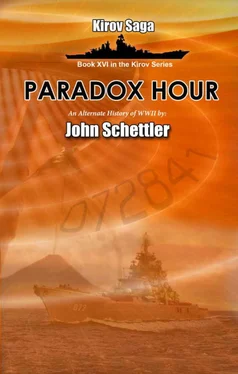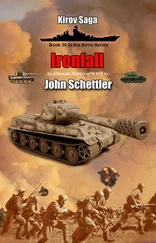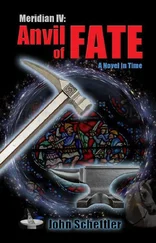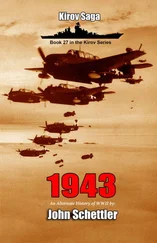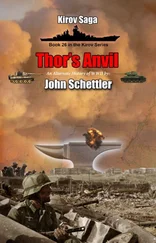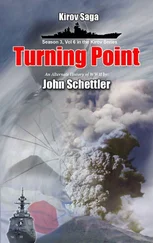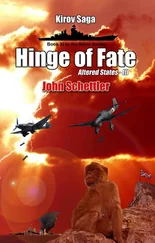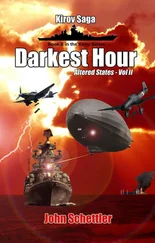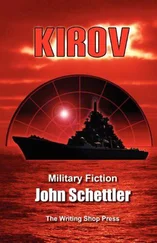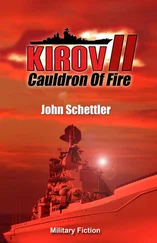He strode off, looking for another radio man to get a message to the fleet. As far as he knew, they still had airships up there. Admiral Gomel was supposed to be parked right over the town, and if he was, that would put a speedy end to those damnable rail guns. If wishes were horses…
* * *
“Shipsahead! Watchman on the forward bow has sighted three airships. They looked to be about 500 meters below us sir. We have the advantage of elevation!”
“Excellent,” said Karpov. “Do we still have rockets?”
“No sir,” said his master of arms. “We expended the last of those on… in that last attack.”
Karpov noted how the man stumbled with that. Yes, we fired everything we had at old Big Red, but the ship was doomed as it was. I just made a speedy end to things, and took down Orenburg in the bargain.
“Very well. Ahead full. Ruddermen will prepare to make a hard turn to port on my command. All gondola mounted guns to bear on the nearest ship.”
Karpov stepped to the viewports, his field glasses up as he looked for the enemy ships. There they were, hanging over the charcoal cotton of a rising thunderhead, their noses up now, with the telltale drool of water from the front of the ships indicating they had just dropped ballast. Three heavy cruisers, he thought—easy prey. Each one mounted a pair of 76mm guns on the top platform. Their remaining six guns would all be on the gondolas, and therefore out of the action unless they could make a rapid ascent and gain elevation on Tunguska . That wasn’t going to happen.
“Get the nose up, Bogrov. Match their elevation gain. Let’s see how high they’re willing to climb.”
He would surge in at his best speed, over 120kph, and then execute his turn to bring his ship broadside to the enemy formation. That would bring all twelve of his bigger 105mm gondola mounted guns to bear on the target. All his remaining guns, the lighter 76mm caliber, were airframe mounted, two in the nose, four on each of the two top gun platforms, and two more in the tail. It was a configuration that made the ship a deadly foe at any elevation relative to the enemy.
Karpov had as much firepower topside as all the guns on one of these enemy heavy cruisers. And the fact that he had built his top gun platforms perpendicular to the long trim of the ship also allowed them to depress downward, and engage targets at lower elevation. It was a design of his own making, unique in the airship fleet. Most ships would mount their topside platforms right over the center of the long fuselage. But Karpov built in reinforced platforms on either side of the rounded fuselage, mounting his guns a few meters down the long curve of the ship to allow for this downward firing angle.
Even though they had less sheer lifting capacity, the heavy cruisers were lighter, and would gain elevation quicker than Tunguska . But let them try, thought Karpov. I’ll blast any ship that climbs right out of the sky.
They were trying, but it soon became evident to Karpov that his enemy wanted no part of a real fight with Tunguska here. They were already turning as they climbed, their engines straining in the wind. Yet they were rising fast, the convection of the thunderheads beneath them aiding their climb. The long years at sea had given him an uncanny sense for range. He estimated they were no more than five kilometers off now, turning tail and revving their engines for all they were worth. Even though Tunguska was bigger and heavier, it had six powerful engines, and could actually out-run the small airships in good air. Yet they would be some time closing to decent firing range if they ran, and now his thoughts turned again to Volkov.
He must be down there trying to get aboard that last ship. In fact, these three here may be trying to lead me on a wild bear hunt, while Volkov slips away.
“Signal Abakan ,” he said coldly. “Ask them if they have that fourth ship in sight yet.”
Minutes later he had his answer. “Sir, that last ship has been identified. It’s the Armavir , part of that same division we ambushed on arrival. Abakan says they’ve grounded the ship, but there’s no sign of a loading operation underway. They’re still fighting that tail fire.”
A tail fire? That was always a difficult thing to overcome, as the crucial rudders and stabilizing rear fins were at stake there. Was Volkov down there? Did he scramble here only to find another burning airship that would be useless to him? If he is there, he’s seen Abakan by now, and he’ll know there’s no way Armavir will ever get airborne. I’ll make it simple for him.
“Tell Abakan to engage. Pound that ship to a smoking wreck, and then climb to 5000 meters.”
“ Topaz station two reporting,” said the signals watchman. “contact reported west over the rail line to Kansk!”
“West? Could that be Talmenka?”
“No sir. That ship is still well to the south. They estimate another three hours flying time to reach us.”
Karpov’s eyes narrowed. Then Volkov has brought in reinforcements. Either those were the two ships he detached earlier, or they are new arrivals. Remember, Volkov has twelve more airships out there somewhere. What to do here? He knew that his enemy could not be on any of those three heavy cruisers running north. And if he was on Armavir , he would be having a very bad afternoon to go with the morning I gave him today. Then he thought, striding over to his map table and throwing the charts aside to get at a map of the local area.
“What’s happening on the ground, Signalman?”
“Sir, last reports indicated the enemy was attempting to disengage. They’ve pulled out of Sverdlova, and they are falling back to the north of the rail line to Kansk.”
So we’ve beaten them, thought Karpov. Either that or Volkov managed to make contact with them and the whole lot is forming a security perimeter around him. In any case, this attack on Ilanskiy has failed, just like the first one.
“Is that contact to the west approaching the town?”
“No sir. It appears static, and at low elevation. We only just picked it out of ground clutter returns.”
That could mean only one of two things, thought Karpov. They were offloading fresh troops, or… Volkov didn’t run north as I first suspected. Of course! Look at the terrain down there. It’s impossible for vehicles, and can you imagine sixty year old Ivan Volkov huffing it all the way up here on foot? No. He’s either down there with his troops near Ilanskiy, or else he ran west instead, along the road to Kansk!
“Helmsman, execute a hard turn to port. Steer for that new contact!”
“Hard to port!” The helmsman was heavy on the wheel, and Tunguska rolled with the turn as Karpov braced himself on the plotting table.
Damn you, Volkov. So you can read a map after all! You nearly fooled me, didn’t you. But I’m on to you now. Of course! There was no way you could get this far north. What was I thinking? You had to run west on the road to Kansk. You knew you had ships there waiting. Well I have men there as well.
“Don’t we have Semenko on that road to the west?” He said that as much to himself as to anyone on the bridge. He had three squadrons of Tartar cavalry at Kansk when this began, and they had been given orders to move east along that road and rail line. Perhaps they’ve run afoul of this little maneuver by Volkov. I’ve got to get there as soon as I possibly can.
He smiled now, realizing how desperate Volkov must be in this situation. He can probably still smell the smoke and fire from Orenburg’s fall, he thought. Well I have news for him now, even if he does manage to slip away here. This war is only beginning. I have an entire Army up north of the Ob river line, and we’ve finally mended fences with Sergei Kirov over Perm. Now those troops can join the Soviets there and move south. Together we’ll have enough force to cross the upper Volga and actually begin an offensive there. That will force him to abandon his campaign on the Ob and fall back west. Yet all that in good time. I’m coming for you, Volkov. I’m coming as sure as winter, and my revenge will be harder and more biting than a Siberian blizzard. Just you wait.
Читать дальше
